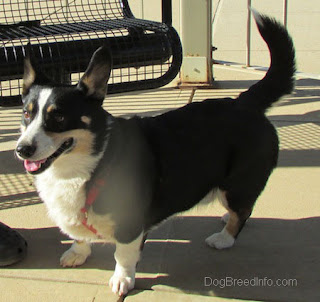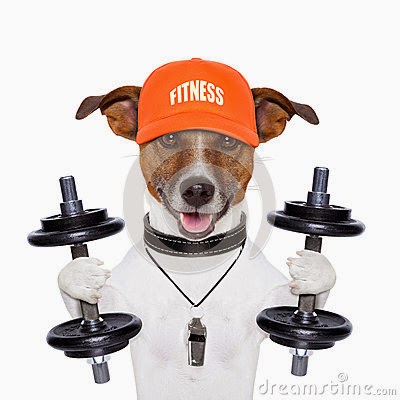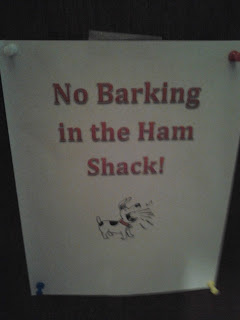Polite Dogs...... Happy People
678-702-4791
http://fayettedogtrainer.blogspot.com




 |
| This is a campaign that dogster ran in 2012. |

 There is great information in the two articles that Annie wrote. My earlier blog post also has some good information about what is required of dog owners.
There is great information in the two articles that Annie wrote. My earlier blog post also has some good information about what is required of dog owners.Remember that training is also a commitment that you have to make to a new dog. As a professional dog trainer, I do not train dogs. I train people in the proper techniques to use with their dogs. Training the dog requires a commitment from the owner. Polite Dogs = Happy People is my motto when it comes to dog training. However, to get a polite dog, the owner must work with the dog! I can show a dog owner the proper technique but, the owner must apply the techniques in a consistent manner.

 The Lovely Shane and I had the opportunity, yesterday, to attend a fund raiser flea market/yard sale for one of our local heroes of dog rescue, Bully Wag. We found some really good buys there and helped support these most innocent of Gods creatures. We also had some of the best barbecue I have eaten in a long time. Michelle does a really good barbecue so, next time they have a fund raiser, my advice would be do not miss the barbecue!
The Lovely Shane and I had the opportunity, yesterday, to attend a fund raiser flea market/yard sale for one of our local heroes of dog rescue, Bully Wag. We found some really good buys there and helped support these most innocent of Gods creatures. We also had some of the best barbecue I have eaten in a long time. Michelle does a really good barbecue so, next time they have a fund raiser, my advice would be do not miss the barbecue!
 The Lovely Shane made this sign for my radio station ( Ham Shack) the other day. I am not sure how effective it is because I have yet to figure out how to teach our pack to read. However, we think it is pretty cool. The Lovely Shane points out that it may be effective because the pack never barks while I am transmitting :). The cost of this really cool sign was nothing but the paper, ink and electricity required to produce it , and my unending gratitude to the Lovely Shane, of course :) . By the way, I picked up the really cool big white monitor on my radio station from the Bully Wag Yard Sale. Got a great deal on it too! Now I can see those little numbers on the radio control software much better now. I am not getting any younger, you know .
The Lovely Shane made this sign for my radio station ( Ham Shack) the other day. I am not sure how effective it is because I have yet to figure out how to teach our pack to read. However, we think it is pretty cool. The Lovely Shane points out that it may be effective because the pack never barks while I am transmitting :). The cost of this really cool sign was nothing but the paper, ink and electricity required to produce it , and my unending gratitude to the Lovely Shane, of course :) . By the way, I picked up the really cool big white monitor on my radio station from the Bully Wag Yard Sale. Got a great deal on it too! Now I can see those little numbers on the radio control software much better now. I am not getting any younger, you know .
Training your dog ought to be a pleasant, satisfying procedure - for you and your animal! Dog training is not really an issue that comes normally to each and every pet owner, however. By no means fear! Just a little suggestions can significantly help towards making the courses method fun and headache-free. Keep reading to discover some helpful tricks to accept the uncertainty away from dog training.
Make use of pets brand whenever you want to obtain his interest. Try to do this at least ten times every day, rather than phone the family pet for your needs by brand to penalize him. This will help to achieve greater control of your furry friend and establish a robust connection.
Puppy training should be viewed as a type of personal handle. If youre struggling to control your self, youll in no way control your pet. Stroll away from your pet, as an alternative to allowing him see an upset outburst, and keep calm even though his behavior is not stellar. Your puppy will respond in the good lighting if he watches one does a similar.
Instruction your pet to walk on steer needs time. The concept is usually to have your pet stroll obediently beside you with out straining, tugging, and pulling back and forth. Appropriate your dogs movements with short snaps of the steer that move sharply and suddenly rear in opposition to his momentum. He will cease yanking and go walking complacently for some time alongside you. During this period loosen the direct however when he draws yet again click the steer yet again.
Whenever your pet is 7 to 12 months older this is referred to as the "worry-mark period. When your pup encounters injury at this time, he may hold the fear linked to this trauma for the remainder of his existence. As a result, your puppys earlier months should include human being speak to, and contact with many other animals. It also need to be an optimistic experience for him, with little punishing, if any by any means.
Should your or else properly-behaved and housebroken canine begins showing poor behaviours, including urinating in the house, accept it to a vet to eliminate any medical problems. A lot of health problems can cause a pet dog to act out. Dont reprimand your ill pet for showing you that it is unwell assist it.
Set-up a solid arrange for what you want to perform with your proper dog training. For those who have goals noted on your calendar it can give you a way to determine your improvement with the training your dog, and provide you tips about regardless of whether you would need to modify something in your program.
After your pet dog workout is done, finish off with a control that you know your pet dog presently is capable of doing. This gives your dogs subconscious to remember that it offers done the times instruction, and can also help your dog to keep the information it provides figured out in the workout. Additionally, it will assist maintain the schedule.
If you have your dog with splitting up stress and anxiety, you can coach him out of this nervousness by varying your routine. In the event you behave like youre leaving behind the house, however dont or store your jacket in a vehicle instead of the cabinet, you may bust the period of measures, that get the dog hyped track of anxiety to start with.
When instruction a dog which is not housebroken it is very important restrict the canines a chance to wander around the house. By keeping the dog generally with the owner it cuts down on enough time it has to proceed to the washroom in the home. Your dog will never wish to go by the homeowner and should hold it till enable exterior.

To coach your dog to stop begging for man food items, you ought to entirely overlook him when you are consuming. Should you pay attention to him, he will think he has a chance of obtaining your food, and so he will never end pleading. In the event you dismiss him during your mealtime, he will quickly find out that pleading is useless and prevent.
A well-skilled puppy is actually a delight to possess and a life time companion. Every loving pet proprietor understands that the obligation of training their puppy brings a great deal of potential positive aspects. There is not any cause not to seek out support to get the most from instruction your pet dog. Setting up an efficient, enjoyable training course will make you and your animal that much more happy with each other.
| Dr. Phil Mc Beagle bravely fights the winter weather to explore the many wonders of the back yard. He chased a pesky squirrel away! |
| Cody with his favorite blanket getting love from Mommy. |
| Dog Training/Foster Shack |
| Trigger in the snowy backyard. |
| Some of my Ham Radio Antennas. Top is VHF Yagi. Underneath that is loop for Television. The wire near the bottom is my HF longwire. No ice forming on the elements yet.... I suppose SWR should be okay for now. Yagi is sort of leaning toward Aunt Maggies house :) |
| Side Yard at Dog Training/Foster Shack |
| Looking toward Grandma and Grandpas house from Dog Training/Foster Shack |
| The senior pack members on the back porch observing the snow |
As with anything else, when it comes to dog training there is a right way to do things and a wrong way to do things. Far too often, when people are instructing they do the wrong thing as opposed to the right thing. If they are any good results that come from this, it will be pure luck as opposed any deliberate action. For example, if you were trying to train a young child to play basketball you would assess his strengths and weaknesses. But, again, there is a right way and wrong way to do this. Telling the child that he is clumsy is not going to work. But, heres the thing: the childs problem is that he is clumsy! But, you do not correct problems with coordination by insulting the youngster. The reason is that the child would be more hurt that helped. When it comes to dog training this maxim applies as well.
People assume that when they train a dog if they verbally or physically punish the dog it will learn to behave. Actually, it will not. Instead, the dog will become less inclined to behave. This is because the dog will become fearful or, worse, aggressive when such tactics are employed. What the dog will not become, however, is behaved.
Regarding bad training methods, people understand right away that these are terrible ways to train a dog. After all, who doesnt think excessive punishment is foolish? But, what many people do not understand is that non-action is another horrible training method as well. Some people may be saying that they understand this because anyone who doesnt train a dog is going to guarantee bad habits. But, many of these people also do not realize that non-action also includes inconsistent or infrequent training as well.
To say "I train my dog" and the training includes training one day one week, skipping two weeks, training two days in a row, skipping one week, training three days in a row for fifteen minutes and then skipping another week is not proper dog training. It is an inconsistent and lazy method that will never yield the right results.
That does not mean you train the dog without a break for hours and hours and hours a day. That will be at another abominable dog obedience training method. Yet, there are many people who will all over train a dog despite the obvious lack of results. As a general rule, too much and too little is disastrous as far as training a dog goes.
Did you find this useful? If so, check out: http://www.dogobediencetraining.com.au - A leading website on dog training methods.
Dogtraininglibrary
Although, positive punishment (like leash a correction) is sometimes necessary, we can use positive reinforcement, toys, treats, playing and other reinforcement to get the dogs to do most what we want them to do. I read recently that corrections make some dogs crazier. It is true in certain cases. I have seen corrections used intentionally to frustrate a dog to make him more excited and intense. The fact is, in the case of highly motivated dogs restraint and physical pain actually lead to more frustration and the heightening or the building of the behavior that most people do not want! People think that strong leash corrections will actually stop a behavior, but constant leash pressure and ill timed leash corrections are actually a form of restraint. Restraining a dog bred for sport or protection dog is actually how trained professionals get the dog to commit more to an object to want something more. This is how they get police dogs and hunting dogs to want an item more...not less. So if you want your dog to stop pulling, teach it to give to leash pressure as a separate skill and then incorporate that skill into your daily walks bit by bit. Eventually, with consistency and patience you can get your dog to be polite on leash.
A work of caution, dont use the heel command with this type of training, as it wont lend itself to formal heeling. The point is to teach the dog leash manners. To begin heeling work is an entirely different approach, of which giving to leash pressure is only one component. If you have the dog understanding how to back off the leash, you may one day want to teach it to heel. So dont pollute or poison that command or you wont have it at your disposal in the future.


 |
| Mommy spending quality backyard time with the pack (notice the porch refrigerator is gone... we finally found someone to take it home!) |
 |
| Ms. Lovey and me (do you like my festive headgear?) |
 |
| Cute Little Lovey |
 |
| Now Copper knows how to relax! |
 |
| Cody enjoying a summer day on freshly mowed grass in the backyard. |
 |
| Mommy spending couch time with eldest pack members |


Dog Bite training Copyright © 2016 -- Powered by Blogger